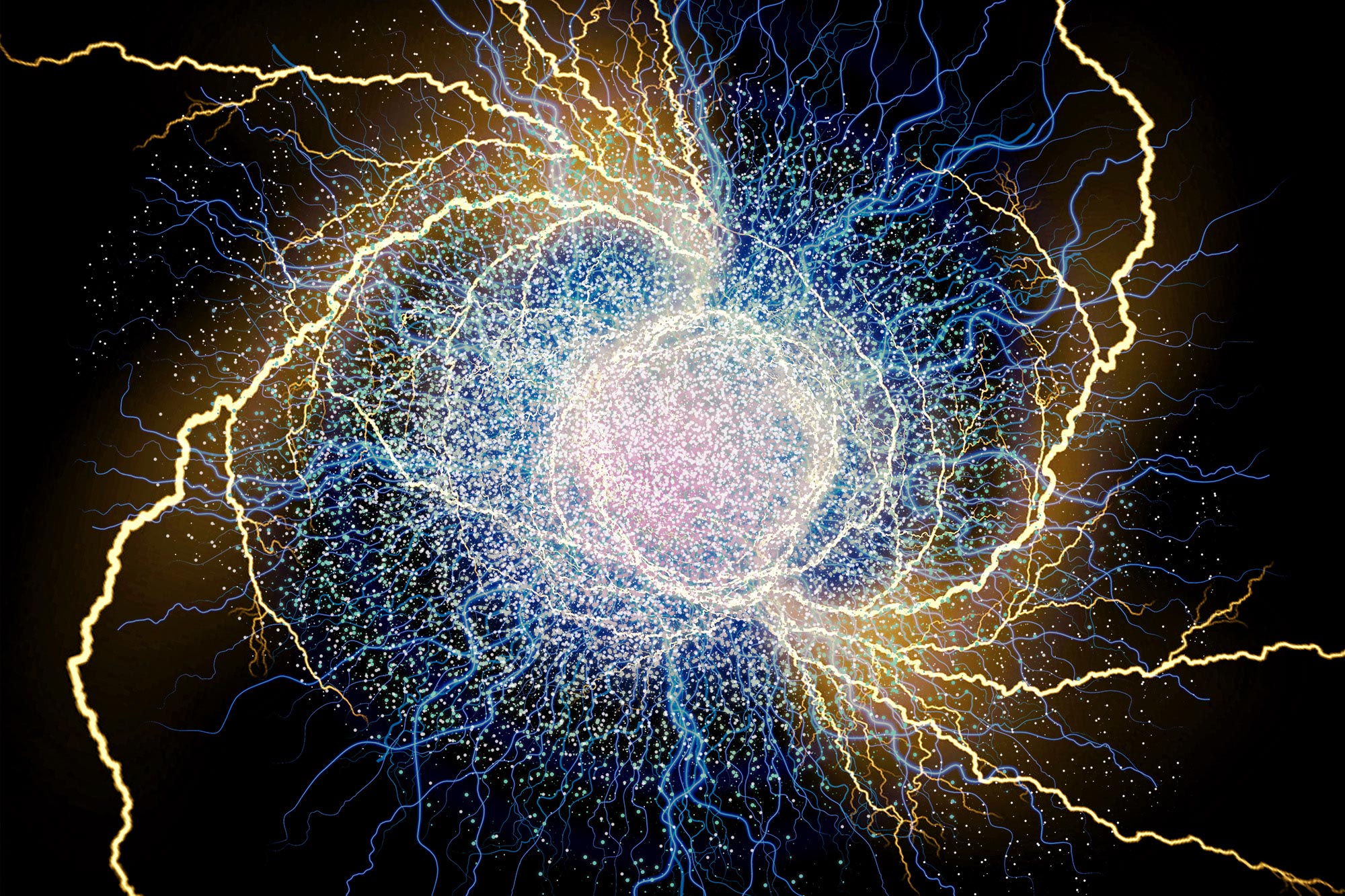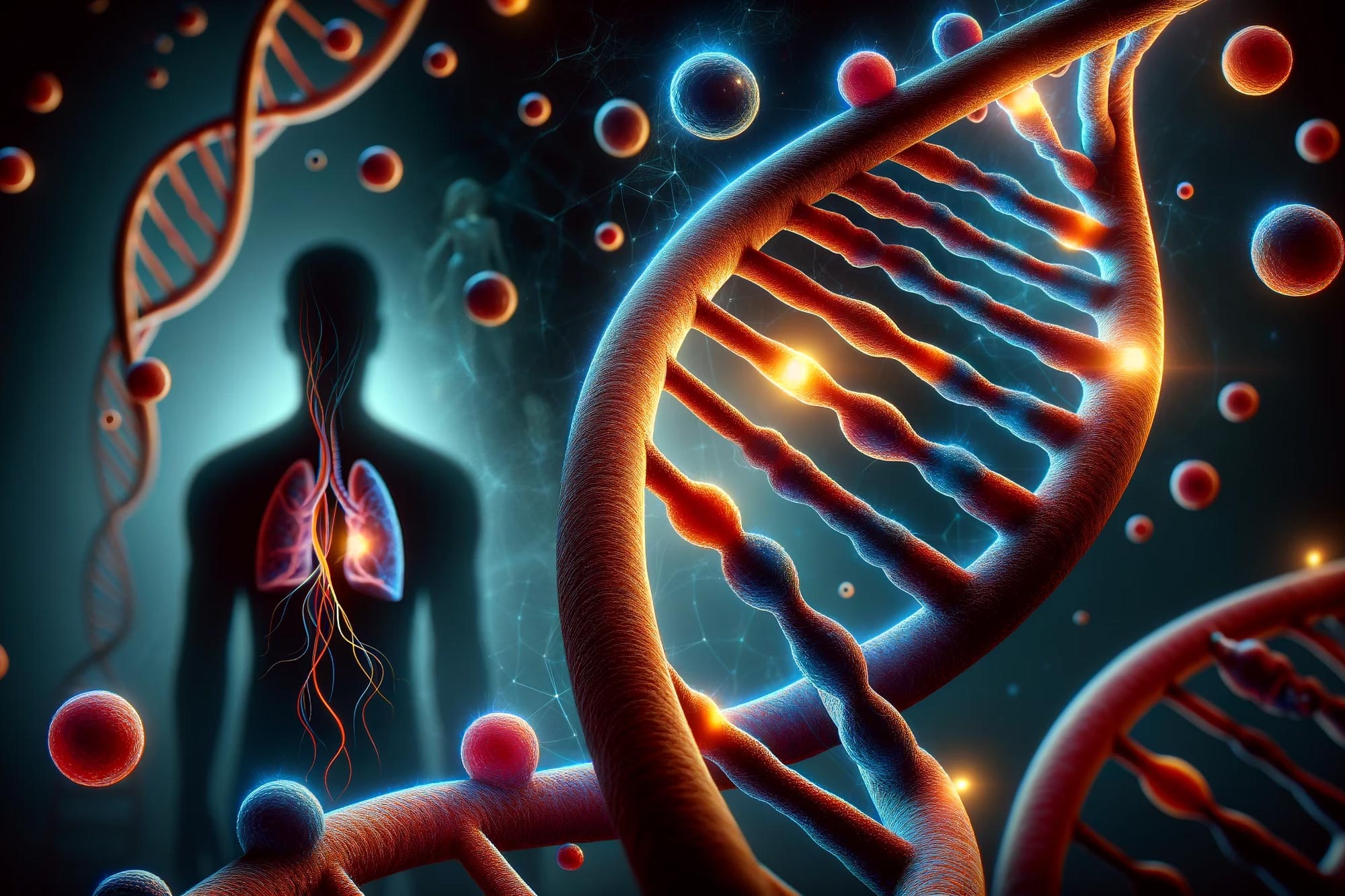
Dlouho očekávané, ale nikdy nepozorované elektronové víry podobné tekutině lze využít pro další generaci nízkoenergetické elektroniky. Kredit: Kristen Danilov, MIT
Dlouho předpovídané, ale nikdy předtím nepozorované chování elektronu podobné tekutině může být využito pro účinnou nízkoenergetickou elektroniku nové generace.
Ačkoli jsou molekuly vody odlišné molekuly, společně proudí jako kapaliny a vytvářejí proudy, vlny, víry a další klasické tekuté jevy.
S elektřinou to není ono. Zatímco elektrický proud je podobně tvořen odlišnými částicemi – v tomto případě elektrony – částice jsou tak malé, že jakékoli kolektivní chování mezi nimi je přehlušeno většími efekty, když elektrony procházejí běžnými kovy. V určitých materiálech a za specifických podmínek však tyto účinky mizí a elektrony se mohou navzájem přímo ovlivňovat. V těchto specifických případech mohou elektrony proudit společně jako kapalina.
Nyní fyzici dovnitř[{“ attribute=““>MIT and the Weizmann Institute of Science have finally observed electrons flowing in vortices, or whirlpools — a hallmark of fluid flow that theorists predicted electrons should exhibit, but that has never been seen before now.
“Electron vortices are expected in theory, but there’s been no direct proof, and seeing is believing,” says Leonid Levitov, professor of physics at MIT. “Now we’ve seen it, and it’s a clear signature of being in this new regime, where electrons behave as a fluid, not as individual particles.”
Reported on July 6, 2022, in the journal Nature, the observations could inform the design of more efficient electronics.
“We know when electrons go in a fluid state, [energy] Ztráta se snižuje, což je důležité při navrhování elektroniky s nízkým výkonem,“ říká Levitov. „Toto nové pozorování je dalším krokem tímto směrem.“
Levitov je spoluautorem nového výzkumného článku spolu s Elim Zeldovem a dalšími na Weizmann Institute of Science v Izraeli a University of Colorado v Denveru.

Ve většině materiálů, jako je zlato (vlevo), proudí elektrony elektrickým polem. Fyzici z MIT však zjistili, že v exotickém dechloridu wolframu (vpravo) mohou částice obrátit směr a rotovat jako kapalina. Kredit: S laskavým svolením výzkumníků
kolektivní tlak
Když elektřina prochází většinou běžných kovů a polovodičů, točivý moment a dráhy elektronů v proudu jsou ovlivněny nečistotami v materiálu a vibracemi mezi atomy materiálu. Tyto procesy dominují chování elektronů v běžných materiálech.
Teoretici však předpověděli, že při absenci takových běžných klasických procesů by měly dominovat kvantové efekty. Totiž, elektrony se musí navzájem zachytit přesným kvantovým chováním a pohybovat se kolektivně jako viskózní elektronová kapalina podobná medu. Toto chování podobné kapalině by se mělo objevit v ultračistých materiálech a při teplotách blízkých nule.
V roce 2017 Levitov a kolegové na univerzitě v Manchesteru ohlásili podpisy takového elektronu podobného tekutině chování v grafenuA[{“ attribute=““>atom-thin sheet of carbon onto which they etched a thin channel with several pinch points. They observed that a current sent through the channel could flow through the constrictions with little resistance. This suggested that the electrons in the current were able to squeeze through the pinch points collectively, much like a fluid, rather than clogging, like individual grains of sand.
This first indication prompted Levitov to explore other electron fluid phenomena. In the new study, he and colleagues at the Weizmann Institute for Science looked to visualize electron vortices. As they write in their paper, “the most striking and ubiquitous feature in the flow of regular fluids, the formation of vortices and turbulence, has not yet been observed in electron fluids despite numerous theoretical predictions.”
Channeling flow
To visualize electron vortices, the team looked to tungsten ditelluride (WTe2), an ultraclean metallic compound that has been found to exhibit exotic electronic properties when isolated in single-atom-thin, two-dimensional form.
“Tungsten ditelluride is one of the new quantum materials where electrons are strongly interacting and behave as quantum waves rather than particles,” Levitov says. “In addition, the material is very clean, which makes the fluid-like behavior directly accessible.”
The researchers synthesized pure single crystals of tungsten ditelluride, and exfoliated thin flakes of the material. They then used e-beam lithography and plasma etching techniques to pattern each flake into a center channel connected to a circular chamber on either side. They etched the same pattern into thin flakes of gold — a standard metal with ordinary, classical electronic properties.
They then ran a current through each patterned sample at ultralow temperatures of 4.5 kelvins (about -450 degrees Fahrenheit) and measured the current flow at specific points throughout each sample, using a nanoscale scanning superconducting quantum interference device (SQUID) on a tip. This device was developed in Zeldov’s lab and measures magnetic fields with extremely high precision. Using the device to scan each sample, the team was able to observe in detail how electrons flowed through the patterned channels in each material.
The researchers observed that electrons flowing through patterned channels in gold flakes did so without reversing direction, even when some of the current passed through each side chamber before joining back up with the main current. In contrast, electrons flowing through tungsten ditelluride flowed through the channel and swirled into each side chamber, much as water would do when emptying into a bowl. The electrons created small whirlpools in each chamber before flowing back out into the main channel.
“We observed a change in the flow direction in the chambers, where the flow direction reversed the direction as compared to that in the central strip,” Levitov says. “That is a very striking thing, and it is the same physics as that in ordinary fluids, but happening with electrons on the nanoscale. That’s a clear signature of electrons being in a fluid-like regime.”
The group’s observations are the first direct visualization of swirling vortices in an electric current. The findings represent an experimental confirmation of a fundamental property in electron behavior. They may also offer clues to how engineers might design low-power devices that conduct electricity in a more fluid, less resistive manner.
“Signatures of viscous electron flow have been reported in a number of experiments on different materials,” says Klaus Ensslin, professor of physics at ETH Zurich in Switzerland, who was not involved in the study. “The theoretical expectation of vortex-like current flow has now been confirmed experimentally, which adds an important milestone in the investigation of this novel transport regime.”
Reference: “Direct observation of vortices in an electron fluid” by A. Aharon-Steinberg, T. Völkl, A. Kaplan, A. K. Pariari, I. Roy, T. Holder, Y. Wolf, A. Y. Meltzer, Y. Myasoedov, M. E. Huber, B. Yan, G. Falkovich, L. S. Levitov, M. Hücker and E. Zeldov, 6 July 2022, Nature.
DOI: 10.1038/s41586-022-04794-y
This research was supported, in part, by the European Research Council, the German-Israeli Foundation for Scientific Research and Development, and by the Israel Science Foundation.

„Hudební učenec. Spisovatel. Zlý slanina evangelista. Hrdý twitter narkoman. Myslitel. Milovník internetu. Jemně okouzlující hráč.“





